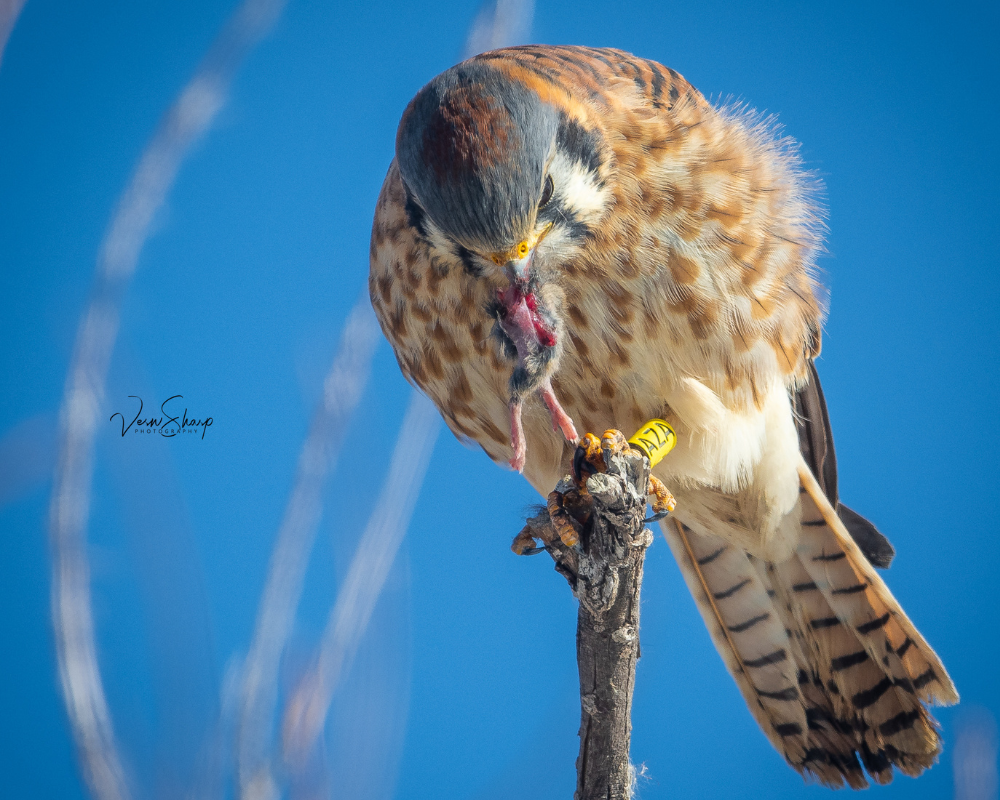Cavity Adopting Raptor Ecology Studies (CARES)

About the Program
Migration count numbers at both our HawkWatches and sites across North America signaled declining populations of American Kestrels. This prompted our team to investigate the causes of this decline during their breeding and nesting season. We have installed hundreds of nestboxes to monitor the success of American Kestrels’ nesting attempts and collect data such as morphological measurements, diet, habitat usage, movement, and physical health. Each nestling is banded with a USGS band and a color band specific to our project. This way, we can learn more about these raptors’ movements when their bright color bands are respotted. Our project has since expanded to monitor all cavity-nesting raptors that adopt our nest boxes. This work would be impossible without our dedicated team of Community Scientists who help monitor our network of nest boxes and report sightings of our color bands.



